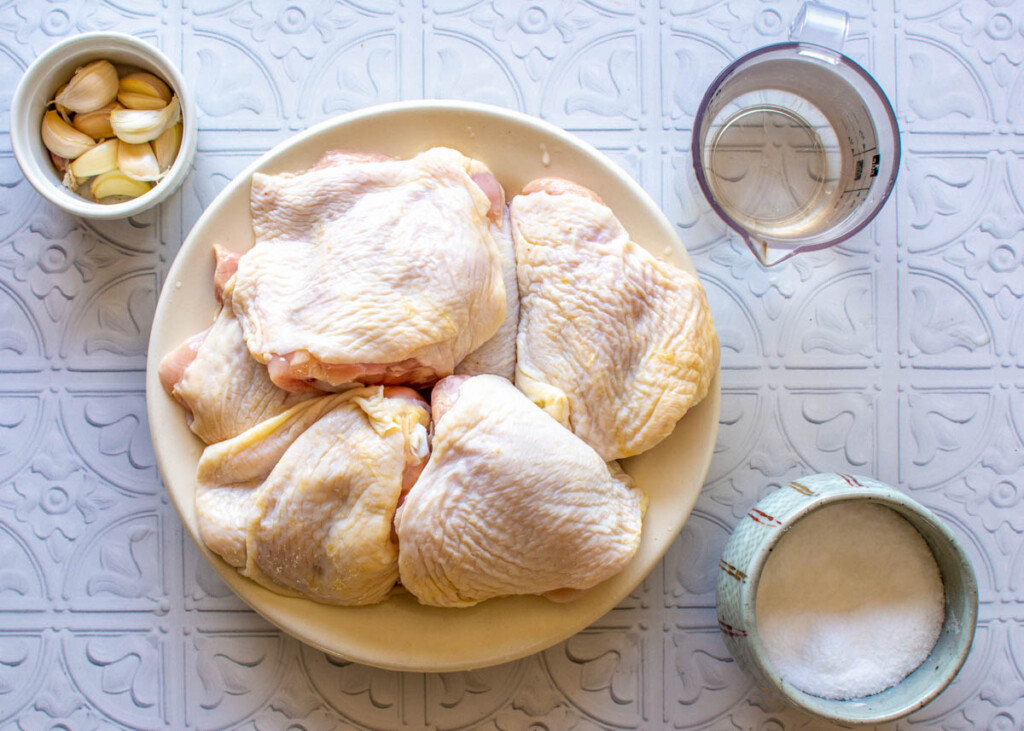Are you tired of the same old boring chicken recipes? Well, get ready to embark on a flavor adventure that’ll knock your taste buds right outta the park! Today, I’m diving deep into the rich, complex world of chicken mole sauce – a true Mexican culinary masterpiece that’s been making mouths water for generations.
What Exactly is Chicken Mole Sauce?
Chicken mole (pronounced “MOH-lay,” not “mole” like the little garden critter!) is a traditional Mexican dish where chicken is smothered in a thick, rich sauce made from a blend of chilies, spices, chocolate, and other ingredients. But don’t be fooled – this ain’t just any sauce we’re talking about!
Mole is actually derived from the Nahuatl word “mōlli” or “chīlmōlli,” which simply means “sauce” or “mixture” Despite what many people think, the word “molé” with an accent is actually a mistake – it’s a hypercorrection not used in Spanish, probably meant to distinguish it from the animal
The Heart and Soul of Mole Sauce
What makes mole so special is its incredible complexity This ain’t your 5-minute sauce! Traditional mole poblano (the most famous variety) typically contains around 20 different ingredients, while other varieties like mole almendrado can have up to 26, and Oaxacan moles sometimes pack in over 30 ingredients!
Here’s what typically goes into a mole sauce
- Chilies: The foundation of any mole – varieties like ancho, pasilla, mulato, and chipotle are common
- Nuts and Seeds: Almonds, peanuts, sesame seeds, pumpkin seeds (pepitas)
- Spices: Cumin, coriander, cloves, cinnamon, and oregano
- Chocolate: Usually Mexican chocolate, which adds depth rather than sweetness
- Fruits: Sometimes plantains or raisins
- Vegetables: Tomatoes, tomatillos, onions, and garlic
- Thickening agents: Tortillas or bread
- Broth: Chicken or vegetable broth to bring it all together
The chocolate part always confuses people. Let me set things straight – mole isn’t a “chocolate sauce” as some folks think. The chocolate (when used – not all moles have it!) balances the heat of the chilies and adds complexity rather than making it sweet. It’s a supporting player, not the star!
A Rainbow of Mole Varieties
If you thought there was just one type of mole, oh boy, are you in for a treat! Mexico has numerous regional variations, each with its own character and color. Some of the most famous include:
- Mole Poblano: Dark reddish-brown sauce from Puebla, often containing chocolate
- Mole Negro: A black mole from Oaxaca with a deep, smoky flavor
- Mole Verde: Green mole made with herbs, green chilies, and sometimes pumpkin seeds
- Mole Amarillo: Yellow mole from Oaxaca made with yellow chilies
- Mole Coloradito: Reddish-orange mole known for its use of ancho chilies
- Mole Rosa: Pink mole from Taxco with a mild spiciness
In fact, Oaxaca is often called “the land of the seven moles” because of its rich mole tradition!
The Fascinating History of Mole
The origins of mole are wrapped in legend and mystery. Two Mexican states – Puebla and Oaxaca – claim to be the birthplace of this iconic sauce.
One popular legend says mole was created in the Convent of Santa Clara in Puebla during the early colonial period. As the story goes, when the nuns heard the archbishop was visiting, they panicked because they had almost nothing to prepare. They prayed and combined the little they had – nuts, chilies, spices, day-old bread, and a bit of chocolate. They killed an old turkey, cooked it, and poured the sauce on top. The archbishop loved it, and when asked what it was called, a nun replied, “I made a mole” (I made a mix).
Another version features Fray Pascual, a monk who invented the dish when spice containers were accidentally knocked over into pots where chicken was cooking.
What we do know for certain is that mole represents Mexico’s mixed indigenous and European heritage, combining ingredients from North America, Europe, Africa, and Asia. It’s truly one of the first intercontinental dishes created in the Americas!
The Labor of Love: Making Mole From Scratch
I won’t sugarcoat it – making traditional mole from scratch is INTENSE. It’s a labor of love that can take days to complete properly. In Mexican families, mole preparation was often shared between generations of women, with recipes passed down as precious heirlooms.
The basic process goes something like this:
- Toasting: Each ingredient (chilies, nuts, seeds, spices) is carefully toasted to develop flavor
- Grinding: Everything is ground into a fine powder or paste (traditionally done by hand)
- Cooking: The mixture is simmered with broth until thick and intensely flavorful
- Serving: The sauce is poured over meat, most commonly chicken or turkey
For an authentic mole negro (black mole), there’s even a step where the chilies are burnt to a crisp and sometimes even set on fire! This gives the sauce its distinctive deep black color and smoky flavor.
My Go-To Chicken Mole Recipe
While I’ve tried making mole completely from scratch (and it was amazing!), I’ll be honest – sometimes I cheat a little. Pre-made mole pastes are available that can give you a great jumping-off point. Here’s my simplified version that still delivers big flavor:
Ingredients:
- 6 bone-in, skin-on chicken thighs
- 3 tablespoons lard or vegetable oil
- 1 cup mole paste (like Doña Maria)
- 4 cups chicken broth
- 2 ounces Mexican chocolate, chopped
- 2 tablespoons sugar (adjust to taste)
- Salt to taste
- Sesame seeds for garnish
Instructions:
- Season chicken with salt and pepper, then brown in lard until golden.
- Remove chicken and set aside.
- In the same pot, dilute mole paste with chicken broth, stirring constantly.
- Add chocolate and sugar, stirring until melted and combined.
- Return chicken to the pot, bring to a simmer, then cover and cook on low for about 45 minutes until chicken is tender.
- If sauce is too thick, add more broth; if too thin, simmer uncovered to reduce.
- Taste and adjust seasoning.
- Serve over rice, garnished with sesame seeds and with warm tortillas on the side.
Common Questions About Chicken Mole
Is mole sauce spicy?
It depends on the variety and who makes it! Some moles pack heat, while others are more mild and balanced. Mole negro can have a noticeable kick, while others are more focused on complex flavor than heat.
What do you serve with chicken mole?
Traditionally, chicken mole is served with Mexican rice and warm tortillas. The rice helps soak up that delicious sauce, and the tortillas are perfect for making impromptu tacos or just scooping up extra sauce. Some people also add a sprinkle of sesame seeds on top.
Can I make mole vegetarian?
Absolutely! Just substitute the chicken with veggies like sweet potatoes, mushrooms, or squash, and use vegetable broth instead of chicken broth. The mole sauce itself can easily be made vegetarian or even vegan.
How long does mole sauce keep?
Leftover mole sauce will keep in the fridge for 3-4 days in an airtight container. It also freezes beautifully for 2-3 months. In fact, many people say mole tastes even better the next day after the flavors have had time to meld.
Why Chicken Mole Is Special
In Mexico, mole isn’t just everyday food – it’s celebration food! It’s commonly served at weddings, birthdays, baptisms, and religious holidays. In fact, there’s even a saying, “to go to a mole” (ir a un mole), which means to go to a wedding.
The dish is so important culturally that several Mexican towns host annual mole festivals. San Pedro Atocpan, a small agricultural community south of Mexico City, produces 60% of all mole consumed in Mexico and 89% of mole consumed in Mexico City! Their annual Feria Nacional del Mole (National Festival of Mole) began in 1977 and continues to this day.
Final Thoughts
Chicken mole sauce isn’t just food – it’s history, culture, and tradition simmered into something magical. Whether you’re adventurous enough to make it from scratch or you start with a prepared paste, experiencing this iconic Mexican dish is a journey worth taking.
So next time you’re looking to step outside your culinary comfort zone, give chicken mole a try. Your taste buds will thank you for the adventure!
Have you tried chicken mole before? What’s your favorite type? I’d love to hear about your experiences in the comments below!
P.S. If you enjoyed this deep dive into chicken mole sauce, be sure to check out my other articles on traditional Mexican cuisine. There’s a whole world of flavors waiting to be explored!

HOW TO MAKE THIS RECIPE
Toast the chiles. Heat a comal or a large dry skillet over medium heat. Add chiles and toast until they are fragrant and become darker in color. Do this in batches if your comal is too small to hold them all in a single layer. Set them aside.
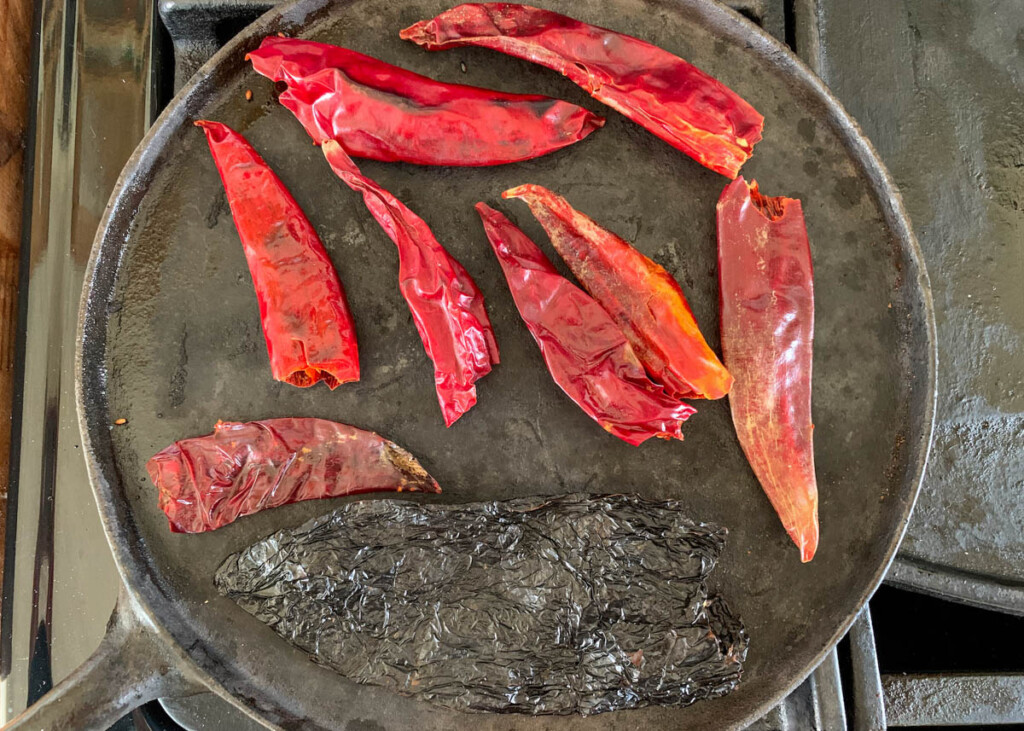
Toast sesame seeds. Heat a small, dry skillet over medium heat and add the sesame seeds. Toast, stirring frequently, until they begin to pop and turn golden. Pour into a heatproof bowl and set aside.
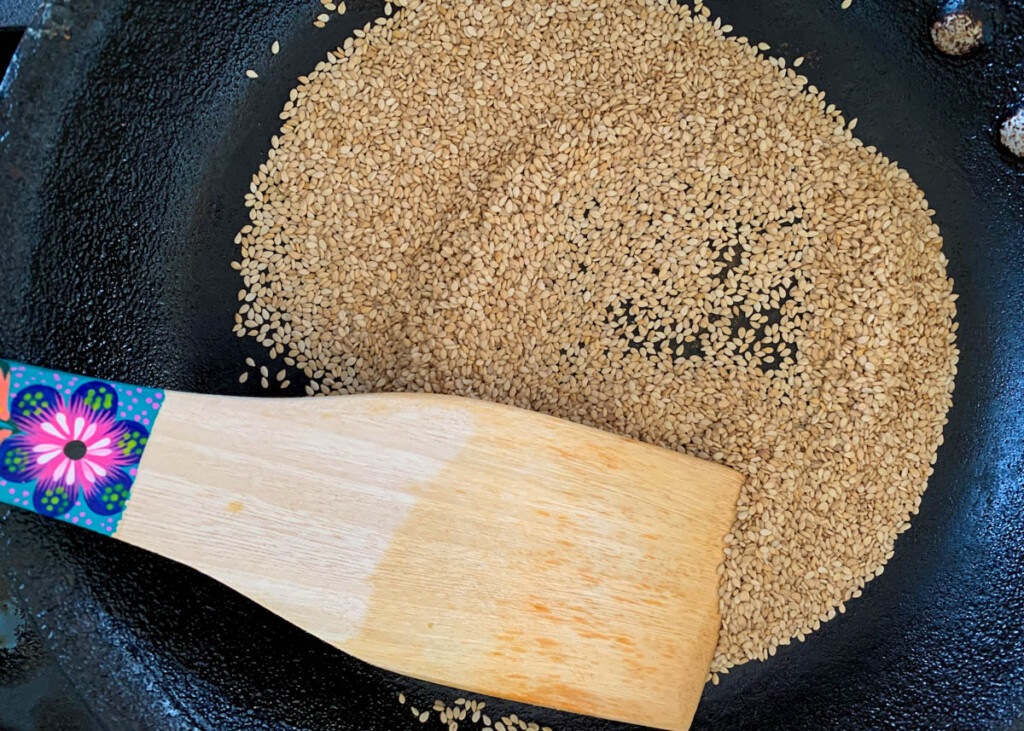
Caramelize the raisins. Heat the comal again over medium heat and add the raisins. Cook, stirring frequently until they are plump and caramelized on the outside. Transfer to a small bowl and set aside.
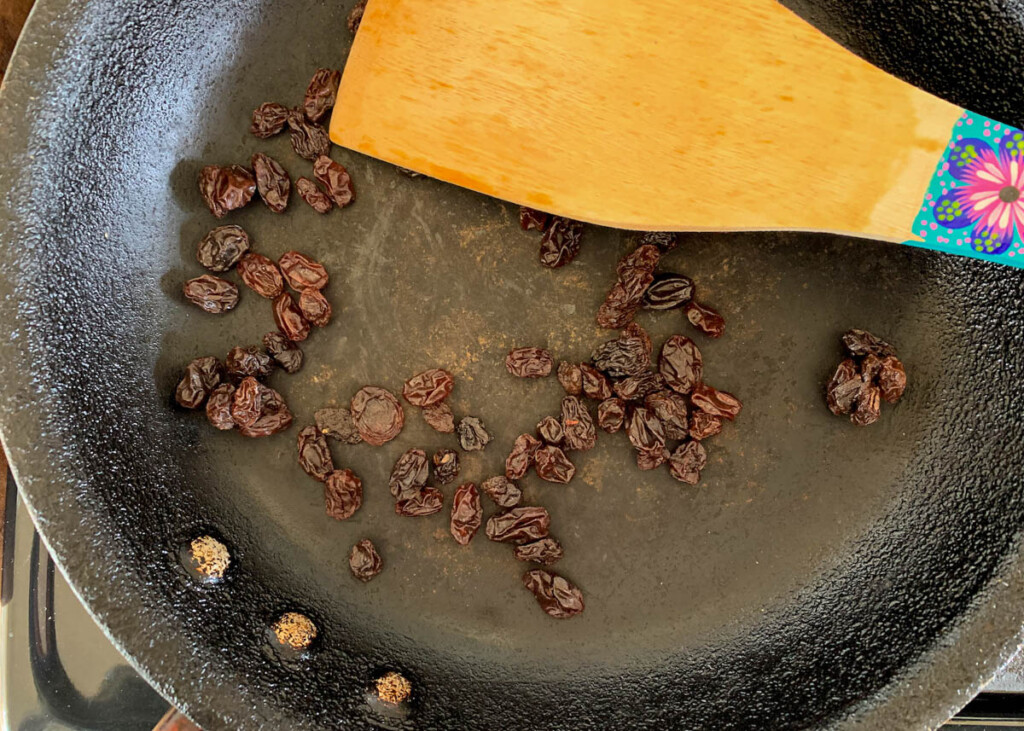
Toast nuts and spices. Now add the almonds, walnuts, nutmeg, allspice, cloves, cinnamon stick, and fresh piece of ginger (if using) to the comal. Cook until the nuts are darker in color and the spices are fragrant, stirring frequently. Set aside in a small bowl. If using ground ginger, add to the blender later.
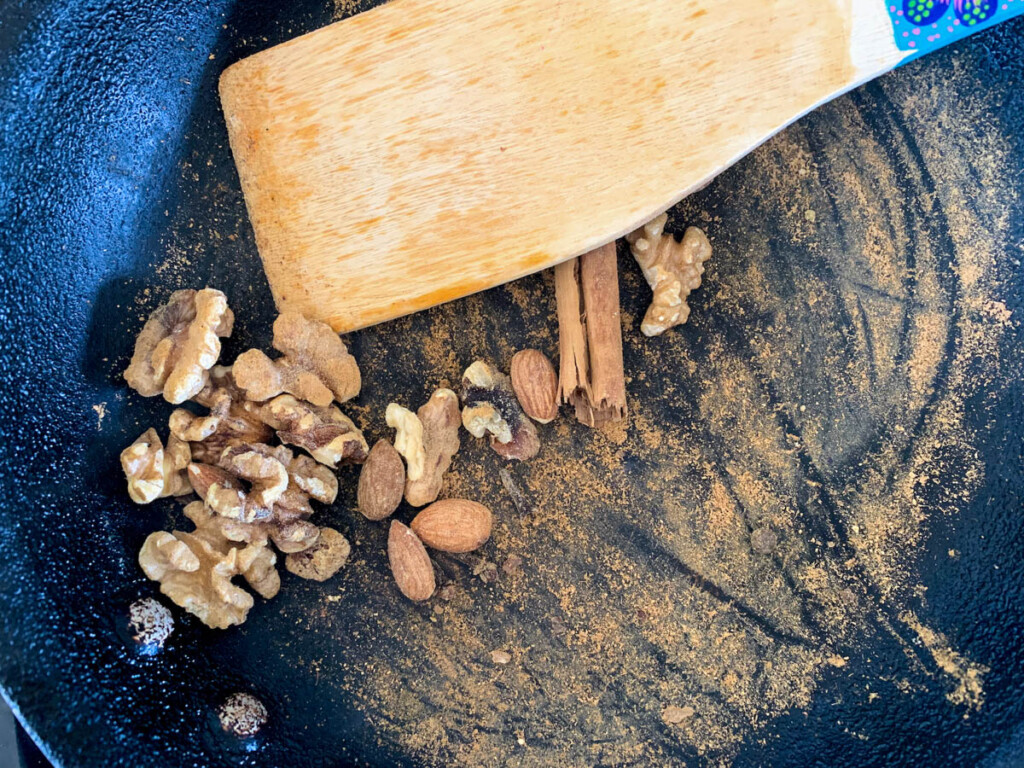
Toast herbs. Finally place the oregano, thyme, avocado leaves, and bay leaves on the comal and cook just until they start to release their aromas, about 10-15 seconds, then move to a bowl.
Char the onions and garlic. The first step is to turn the ventilation hood over your stove to high. If you have a gas stove, remove the grate on the stove top and heat the flame to low. Place the onion and garlic directly on the flame and cook, turning frequently, until they are blackened on the outside and the garlic cloves are tender enough to slip out of the skins. This will take about 20 minutes. Remove to cool, then peel from their skins.
NOTE: If you don’t have a gas stove or want a simpler technique, heat the broiler to high and arrange a rack at the top of the oven. Place the onion, garlic, tomatoes, tomatillos, and chiles on a large baking sheet. Place under the broiler and cook until all the vegetables are blackened on the outside. Keep checking and turning them so they blacken on all sides, removing the vegetables as they are ready.
Alternatively, you could also blacken them over a grill outside.
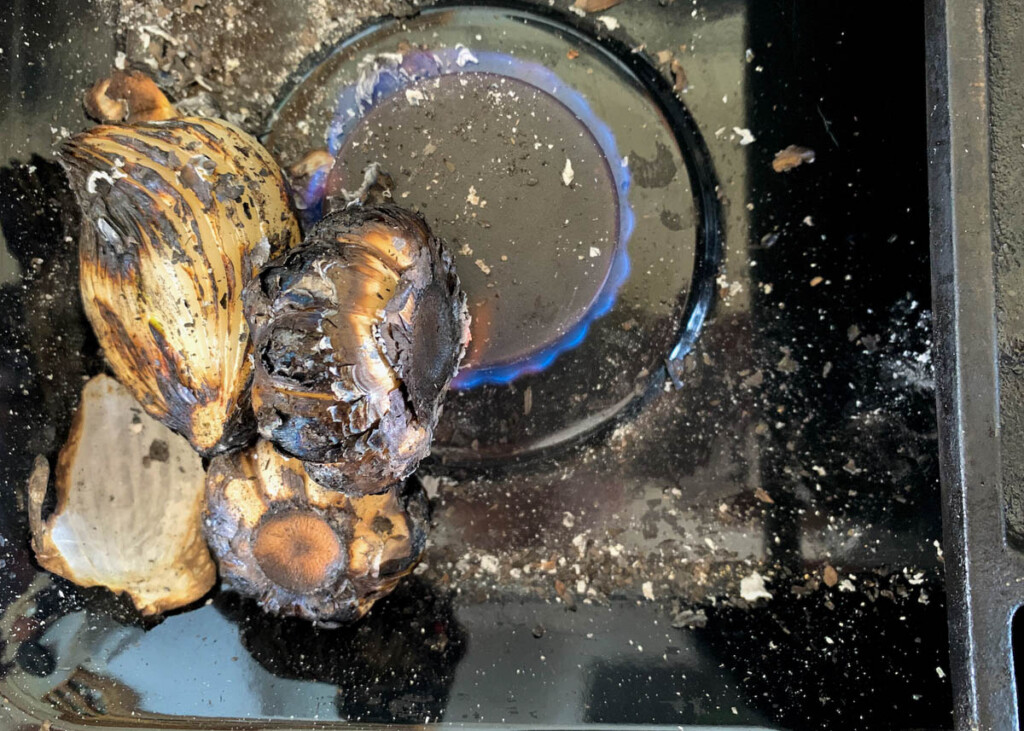
Char the tomatoes and tomatillos. Now place the tomatoes and tomatillos over the flame and cook until charred and blackened on the outside. Turn frequently to blacken all sides evenly. Set aside.
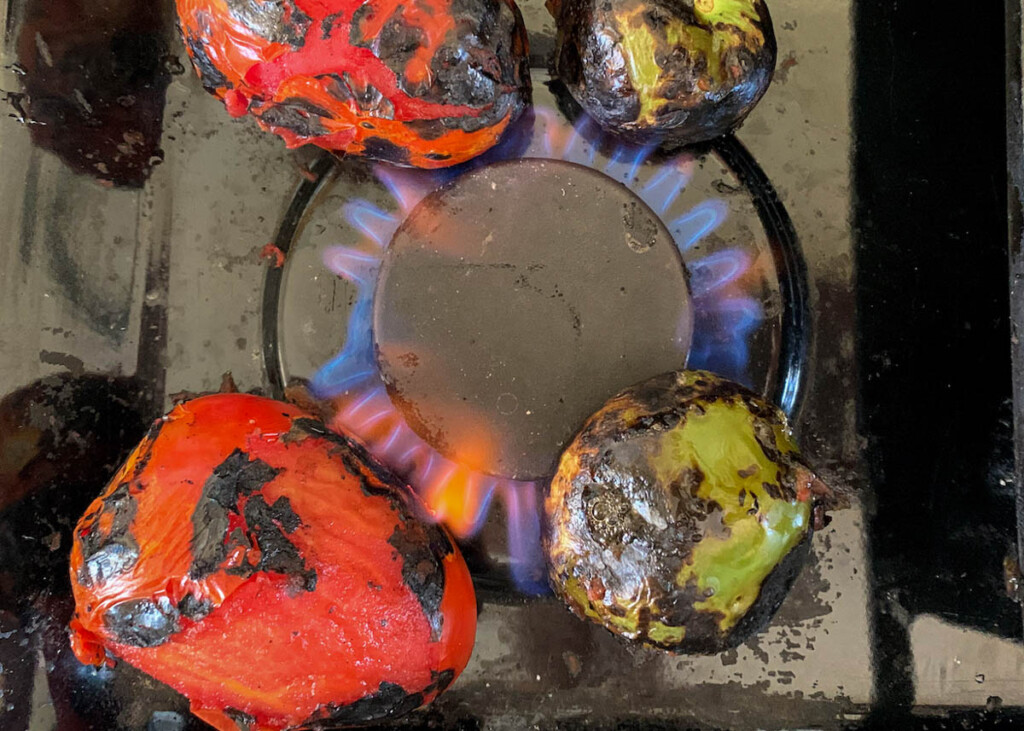
Blacken chiles. Lastly, place the toasted chiles on the comal (if it has high sides) or a large frying pan (if it does not). Eventually you are going to add water, so it will need to hold that. Place the pan over high heat (make sure your vent is on high and your windows are open, maybe even wear a face mask) and toast the chiles until they are completely blackened, turning frequently, about 15 minutes. You want them all to be black and very dry.
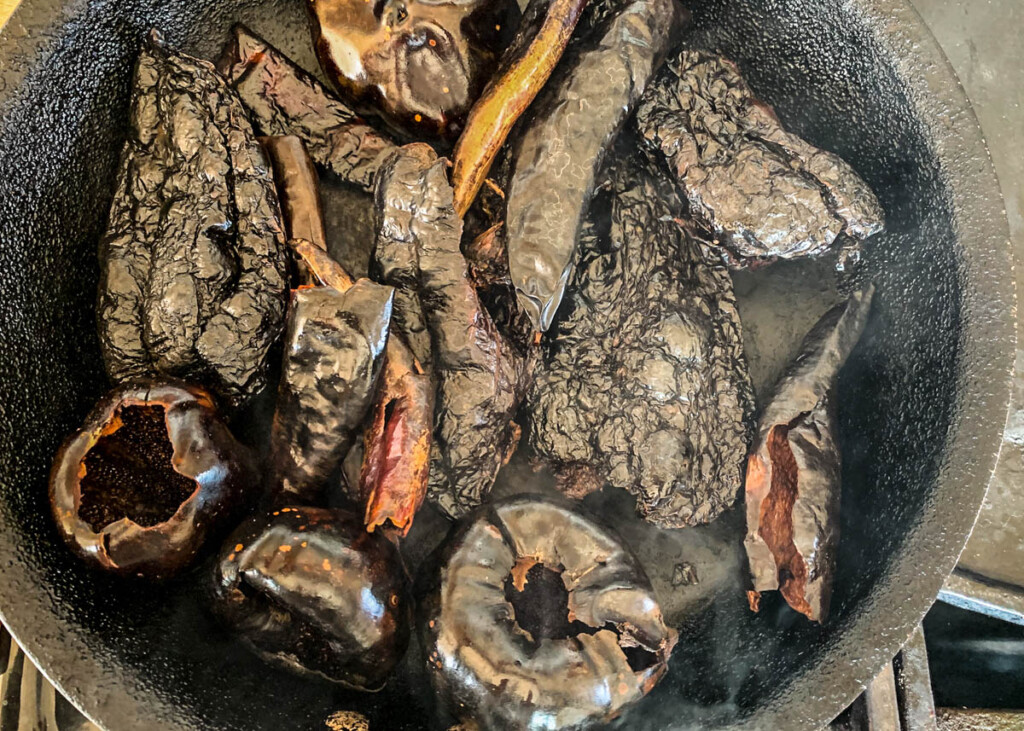
Okay, here’s where things get wild. Carefully take the pan of blackened chiles outside to a heatproof space, like on a concrete patio, on top of a grill and away from anything flammable. Have a cup of hot water close by. Using a kitchen torch, light the chiles on fire and let them burn until they are carbonized shells of themselves, about 1-2 minutes. The flame can get big and there is a lot of smoke, so make sure you have a clear space. Carefully pour the hot water over the chiles to put out the flames. Let the chiles sit in the water for 5 minutes to soften, then drain.
NOTE: These burnt chiles are the essence of the mole. It is the ash flavor you are going for. You can skip this step but it won’t be the same.
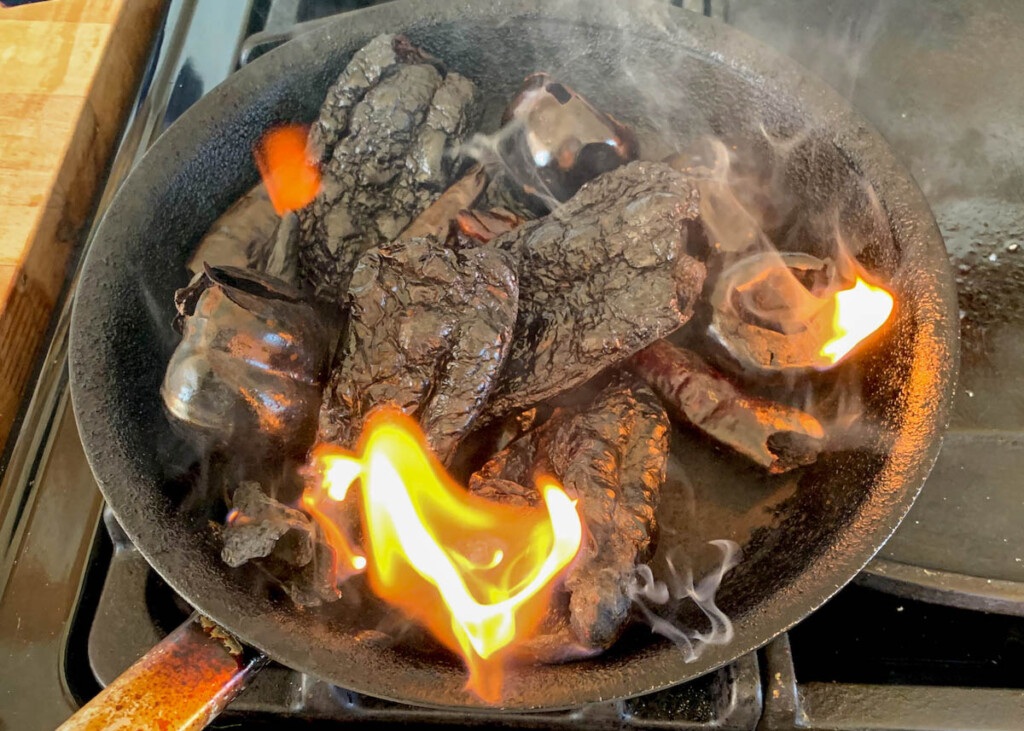
Blend. Combine 1 ½ cups of the chicken broth with the sesame seeds, raisins, nuts and spices, oregano, thyme, onion, garlic, tomatoes, tomatillos, and burnt chiles. Blend on high until very smooth. Do this in batches if you have a small blender.
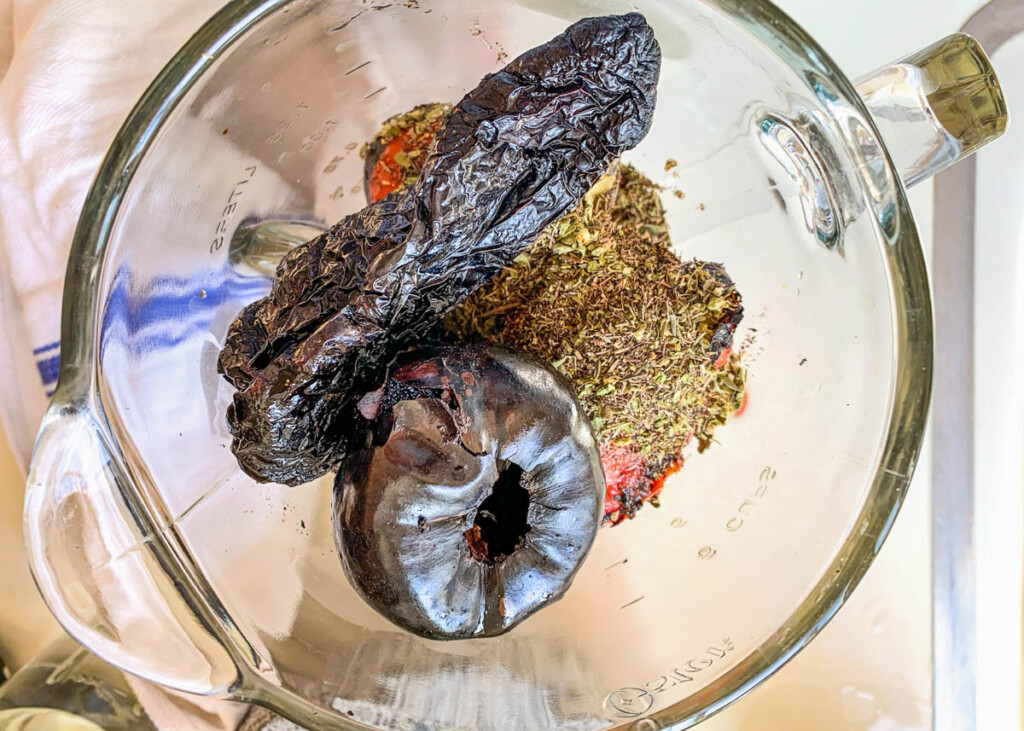
Fry the mole. Heat the oil (or lard) in a large Dutch oven or heavy-bottomed pot over medium-high heat until very hot. Add chile puree and cook, frying in the oil. Stir frequently, until it darkens in color and becomes very thick.
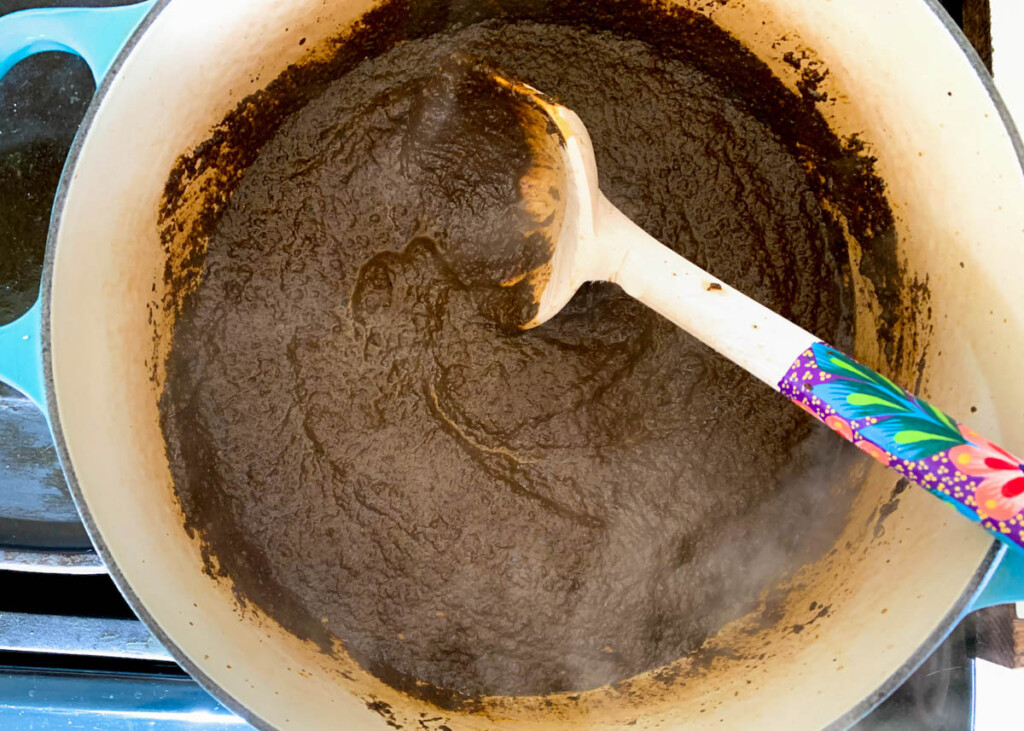
Add chocolate. Add 2 cups chicken broth, chocolate, avocado leaves, bay leaves, sugar, and 1 tablespoon of salt. Cook, stirring frequently, until chocolate dissolves.
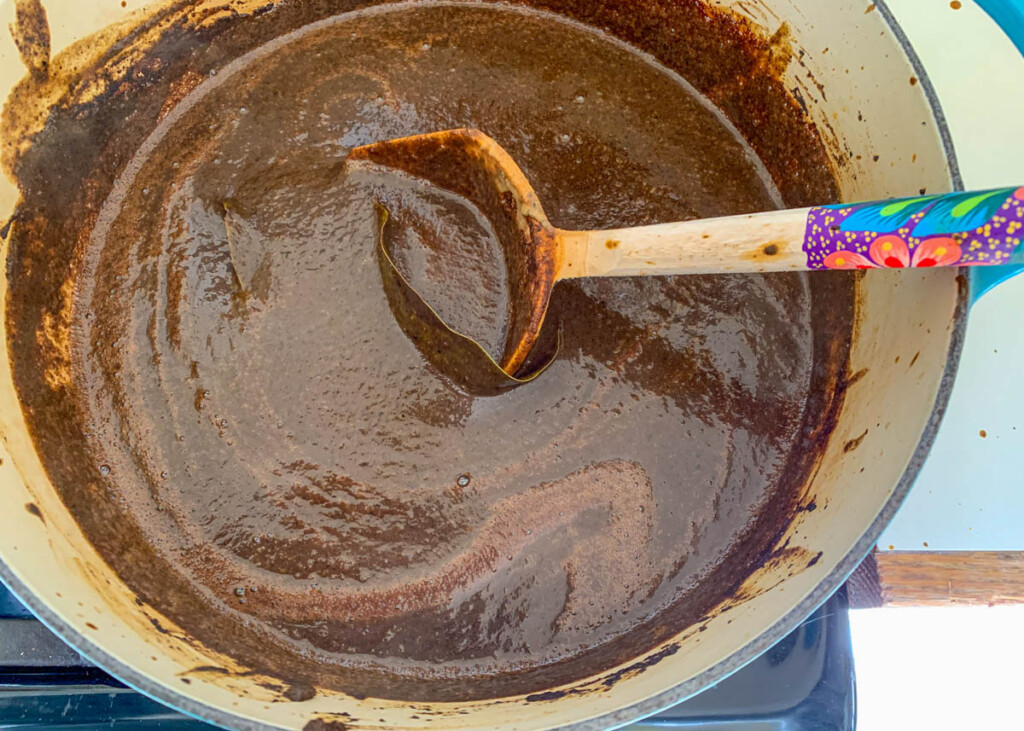
Blend the bread. While the mole is cooking, place the toasted bolillo halves in the blender (you don’t need to clean it first) along with ½ cup of chicken broth and blend until smooth.
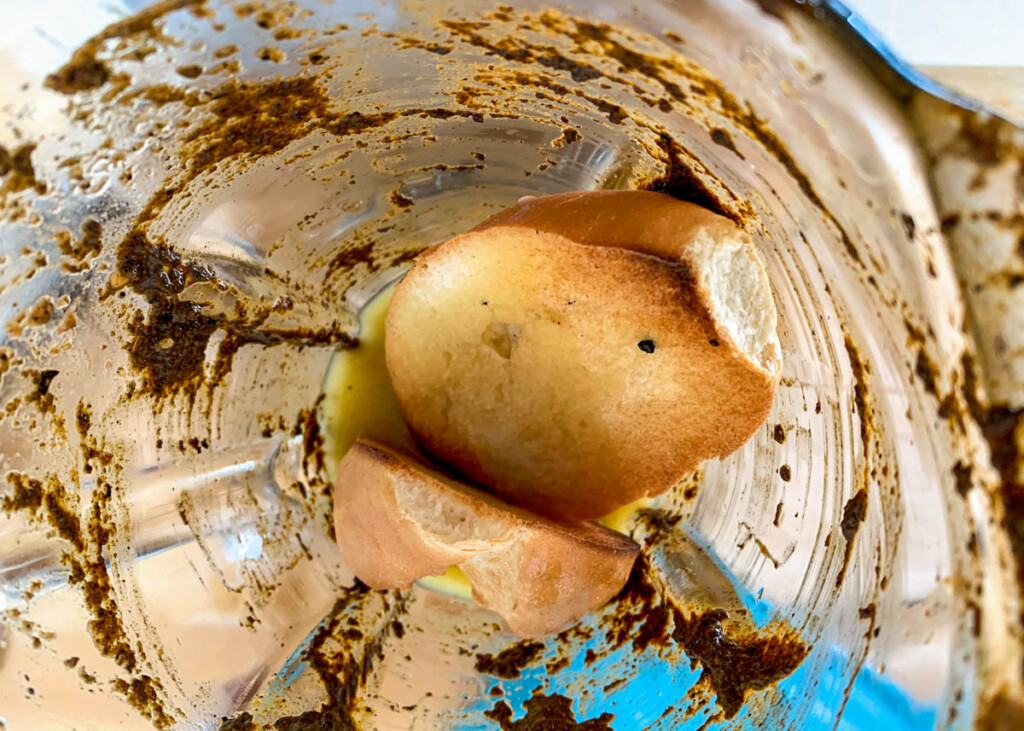
Add bread mixture. Pour this bread mixture into the mole sauce and bring to a boil. Reduce heat to medium-low and simmer, stirring occasionally, allowing the flavors to meld together, about 15-20 minutes.
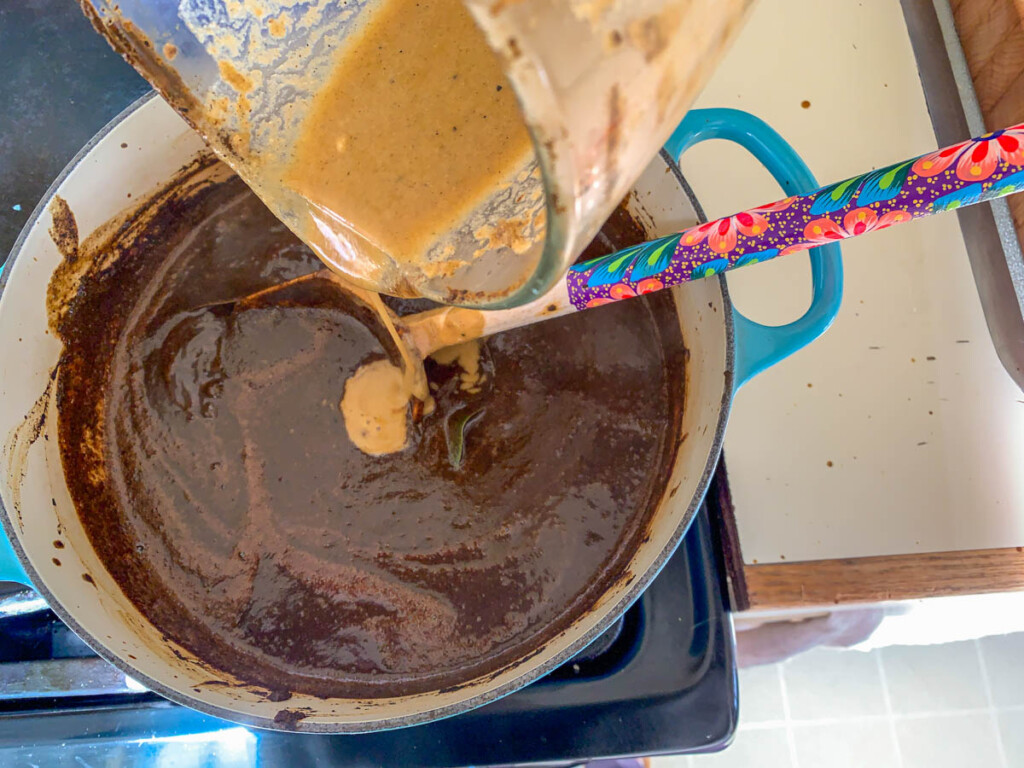
Taste and thin. Taste the mole and add more salt if necessary. The mole should easily drizzle off the spoon. If it is thick or gloppy add more chicken broth to thin it out. Let simmer, covered, over very low heat, stirring occasionally, while you cook the chicken.
Make garlic paste. Begin the chicken by making a garlic paste in a molcajete with the garlic cloves and salt.
NOTE: You could also do this in a food processor with a little bit of water if you don’t have a molcajete.
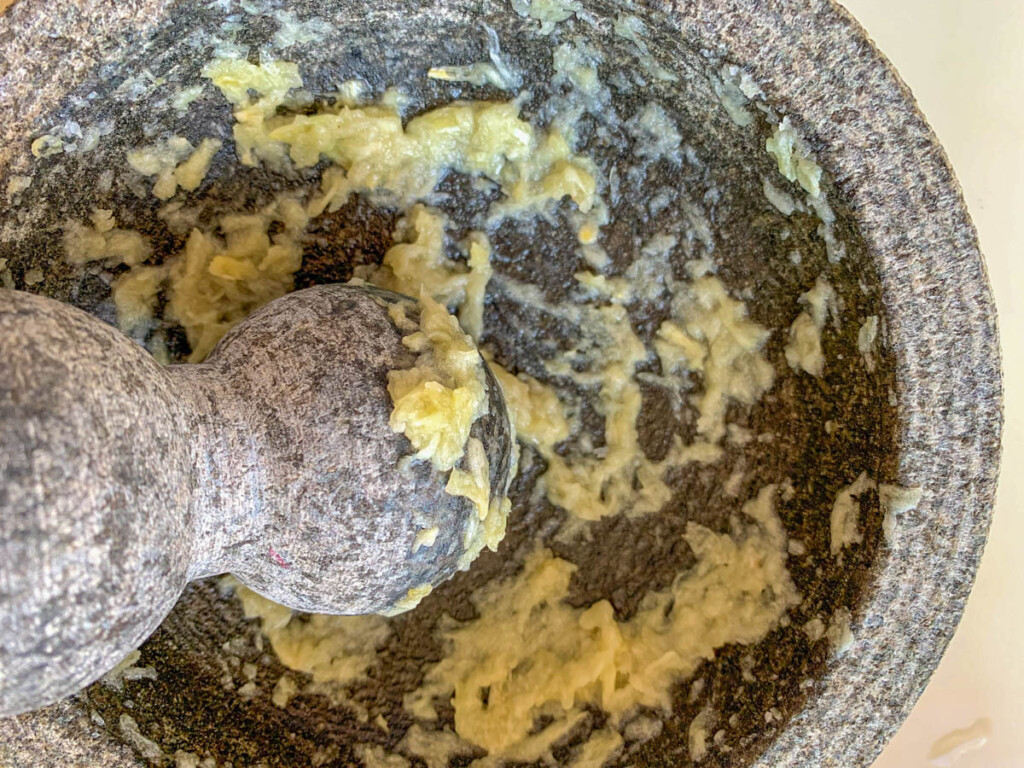
Heat garlic. Add ¼ cup of water to the molcajete to transfer all the garlic mixture to a skillet large enough to hold all the chicken in a single layer. Bring to a simmer over medium heat.
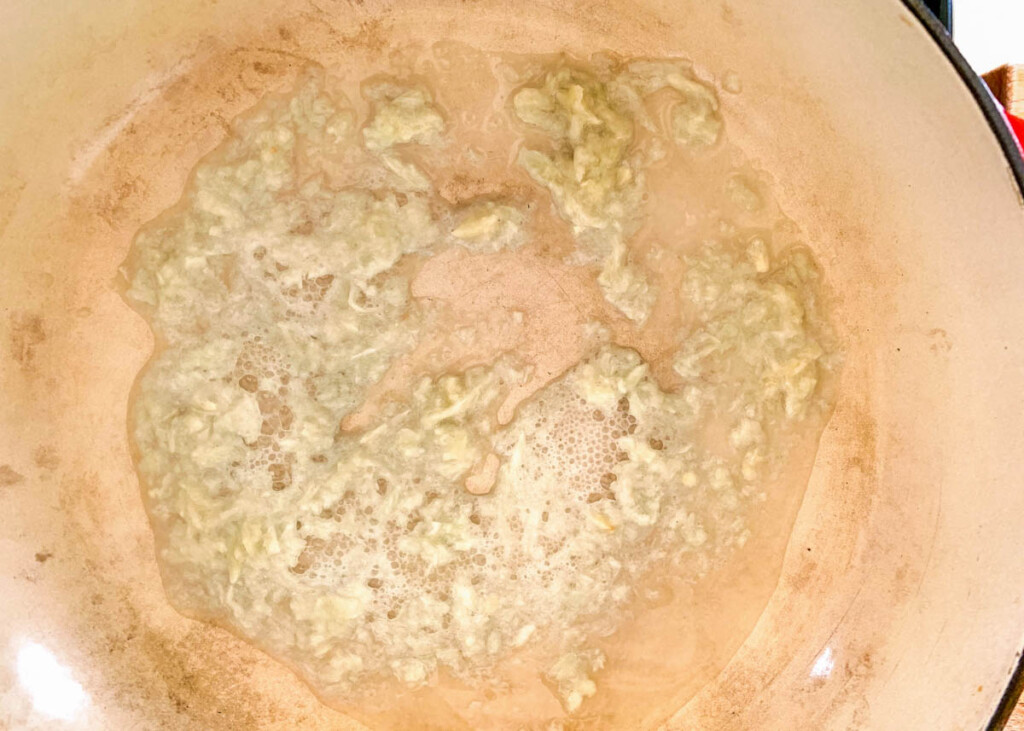
Fry chicken. Add chicken to the pan, skin-side down and simmer until liquid reduces and chicken starts frying in its own fat. Reduce heat to low and cook, turning every 10 minutes or so until chicken is golden and fully cooked, about 45 minutes.
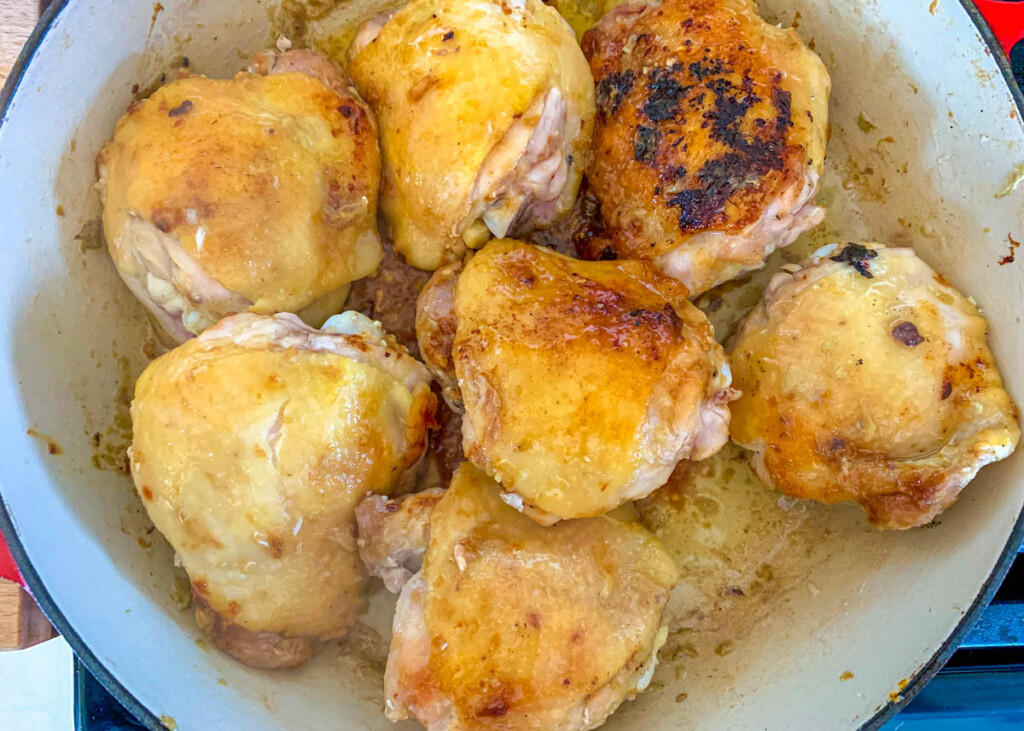
Serve. Place a piece or two of chicken on each plate and cover with warm mole sauce. Sprinkle with more sesame seeds and serve with rice and warm tortillas.
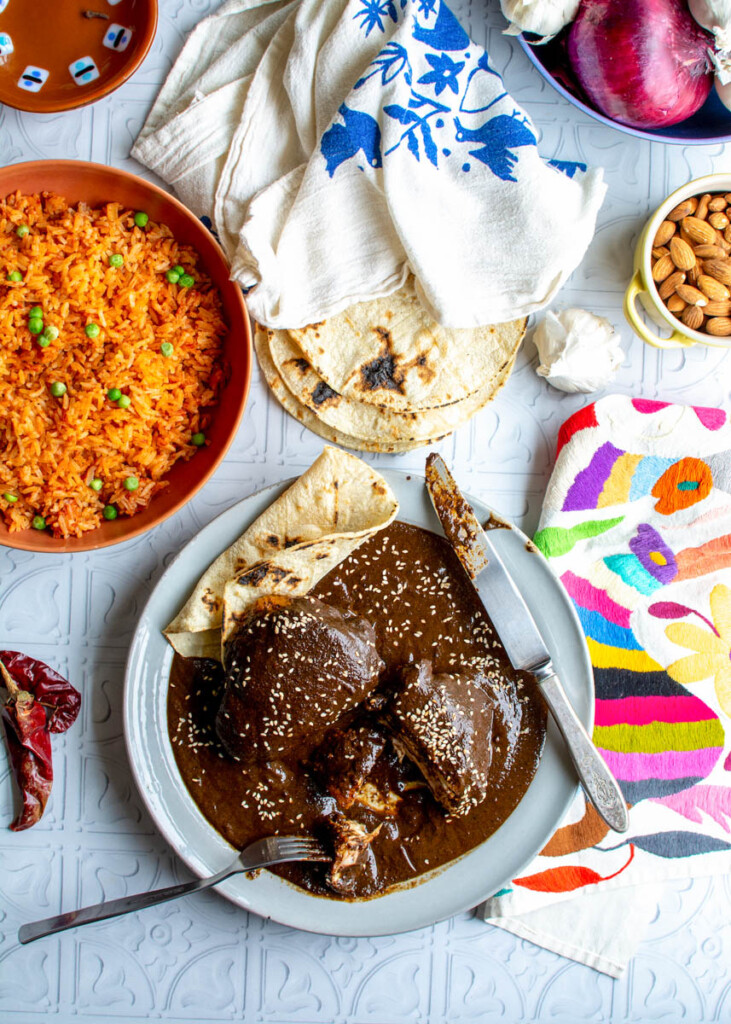
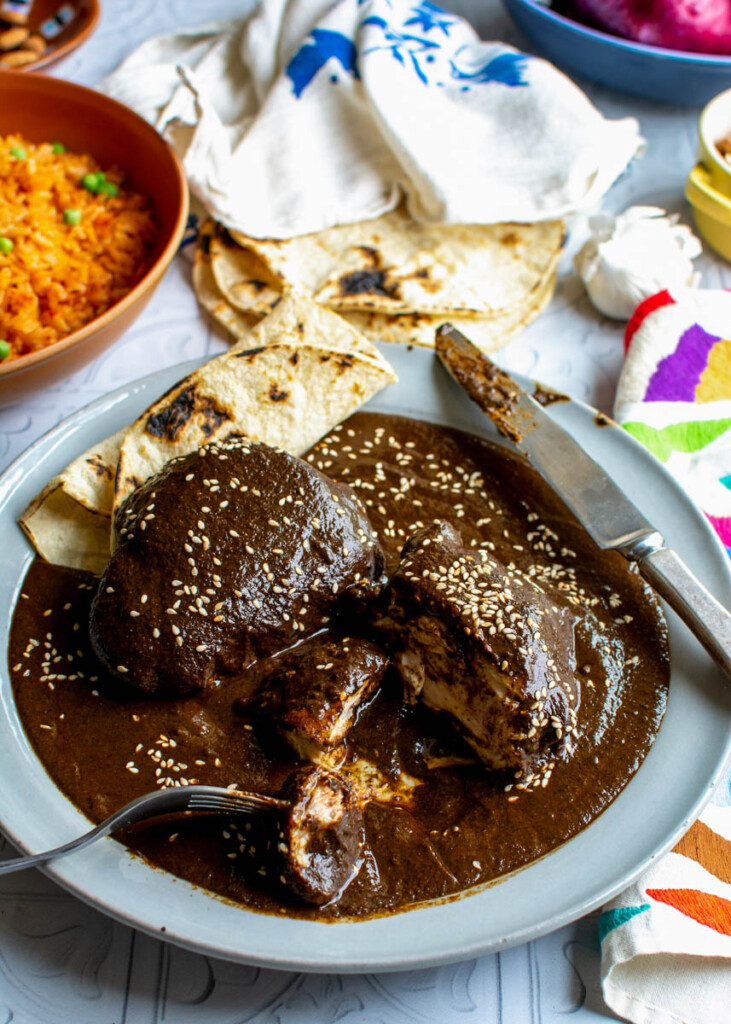
WHAT IS MOLE NEGRO MADE OF?
The ingredients are also a bit complicated. For instance, the chilhuacle chile pepper (or black chile), can only be found in Oaxaca or in Latin markets that specialize in Oaxacan products or for a pretty penny online. Other items like mulato chiles and avocado leaves might also be difficult to track down depending where you live. For these reasons, mole negro is reserved for special days of reverence including Day of the Dead and wedding celebrations. It would even be amazing with turkey at Thanksgiving. Whenever you choose to make it, just know all your efforts will not go to waste. This sauce is intense, rich, and deeply flavorful. It is a little sweet and very savory with a hint of heat at the end.
- Dried guajillo chiles
- Dried chihuacle chiles or cascabel chiles (which is what I use to make this at home)
- Dried mulato chiles or black ancho chiles
- Sesame seeds
- Raisins
- Almonds
- Walnuts
- Whole nutmeg
- Whole allspice
- Whole cloves
- Cinnamon stick
- Fresh ginger or ground ginger
- Dried thyme
- Dried oregano
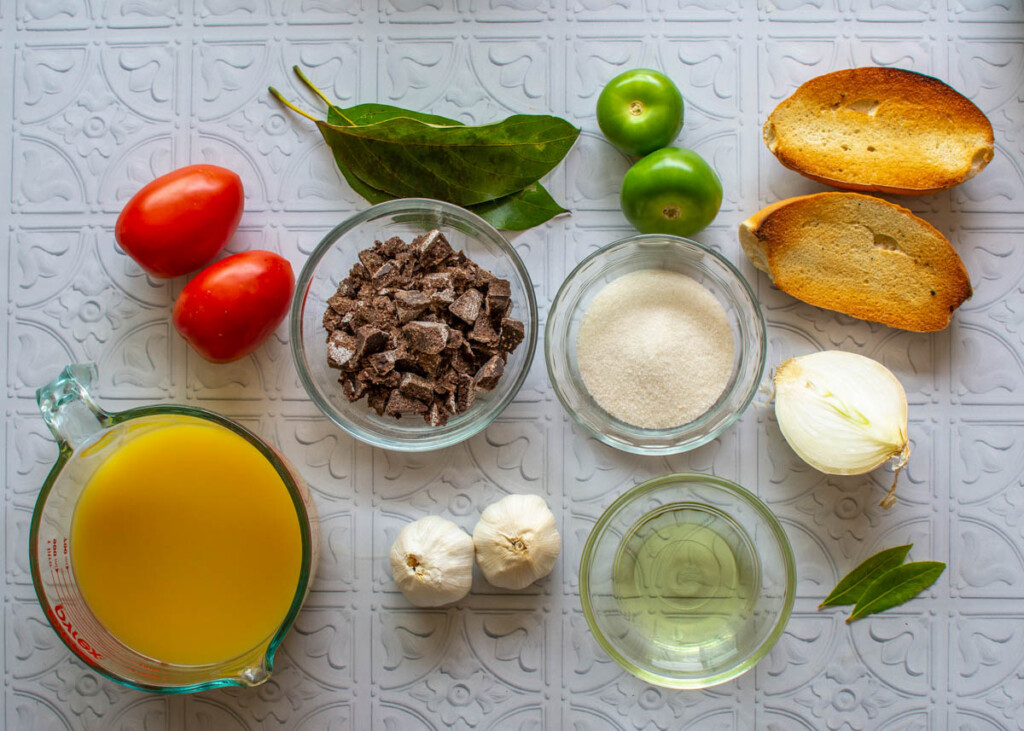
- Avocado leaves
- Bay leaves
- White onion
- Garlic
- Tomatoes
- Tomatillos
- Chicken broth
- Vegetable oil or lard
- Bolillo roll
- Sugar
- Mexican chocolate
- Salt
